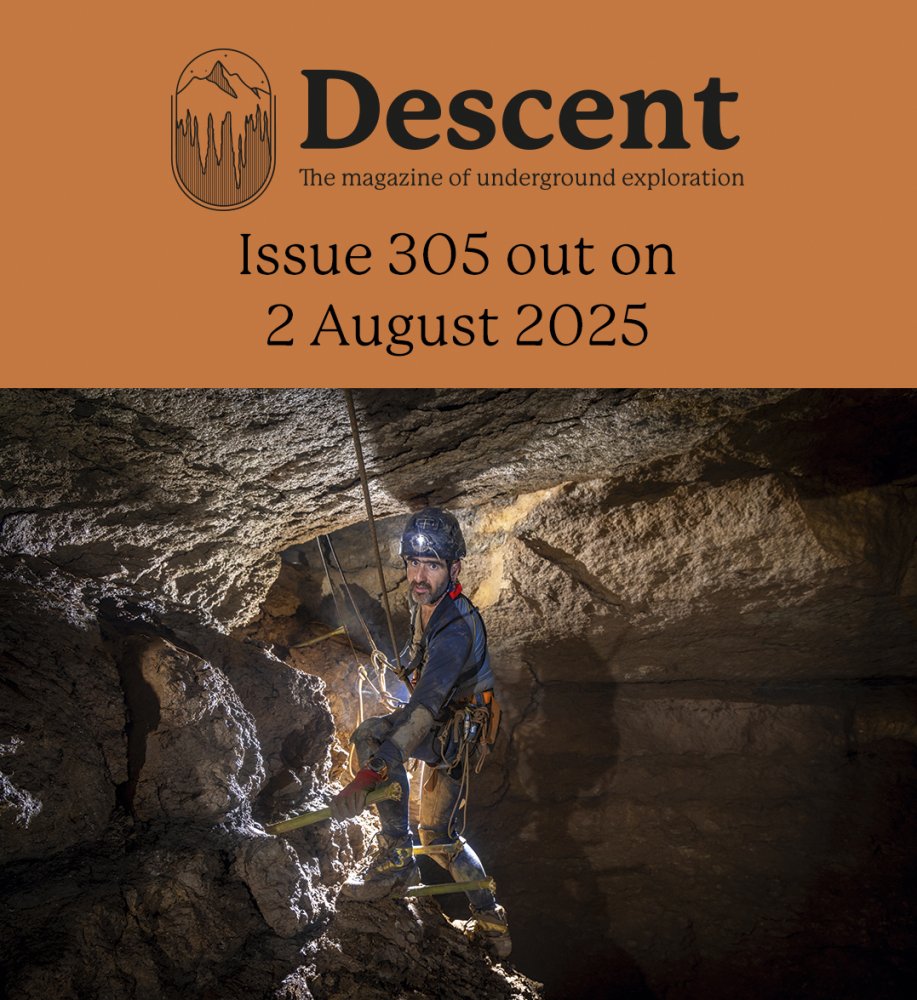Moonrat
New member
Llanelli Quarry Pot (Attribute this to Marsrat please, just on wrong account)pwll dwfn?

Llanelli Quarry Pot (Attribute this to Marsrat please, just on wrong account)pwll dwfn?
Llethryd SwalletSOUTH WALES
------------------
Lower down is cave N. There are about five hundred yards of passages, often extremely narrow, with squeezes and ’S’ bends. Halfway in, a flake of rock, three inches wide at its thickest, divides the tunnel. This cave is flooded in wet weather, and so should only be explored in a dry period.
Isnt this the same as Cave I?Lots of guesses for cave N. One of them is correct. I will post all of the answers at the end.
Here is today's cave description. It's been many years since I heard divers referred to as frogmen.
DERBYSHIRE DALES
-------------------------
Cave O has an impressive a setting as could be wished for, in its gorge of sheer cliffs, with Peveril Castle above, and the lofty cave mouth below. The cave lacks good stalactites, but has very long, impressive passages. It is one of the largest cave systems in Derbyshire; and it has recently had some fresh series added to it by the explorations of the Cave Diving Group (the ‘Frogmen’).
Bugger. Yes. I will post another description a little later this evening.Isnt this the same as Cave I?
That should have been Ffynnon Garreg Fawr!Or maybe Ffynnon Gareth Fawr or possibly Ogof Pont Sychryd?
Giants?Okay forget the cave O description above. It is indeed the same as cave I.
Here is tonight's cave description.
DERBYSHIRE DALES
-------------------------
The road back to Buxton by Sparrowpits (B6061) passes 4 notable caves. Cave O is a swallet (one of several); a full exploration means bobbing under a stalactite curtain which nearly or altogether touches the water, according to the dryness of the season. Beyond the barrier a narrow passage leads to a stalactite grotto; and a new series has recently been discovered. The stream passage ends in a sump. This has been passed for a hundred feet by the cave divers, who found it most foul and muddy.
Elton Hole?DERBYSHIRE DALES
-------------------------
Caves P and Q are two real potholes, the latter being one of the most difficult pots in the whole country. Neither can be attempted without proper gear, managed by experts; and previous experience is essential before they are tackled. Cave P has been known since the eighteenth century, when it was first climbed. Dr Baker in his book, Caving, he describes how he and some friends first climbed this pot as an exercise in mountaineering without ladders; the experiment has never been repeated! There is a steep slope of 70 feet, followed by a sheer drop of 130 feet. Dr Baker's second attempt, four months later, also nearly brought him disaster. He was being pulled up in a bosun's chair when there was a crack and a roar. A six-foot boulder had been dislodged by the ropes and came crashing down, fortunately just missing him and a friend who was cowering down at the bottom of the shaft. From the bottom of the pot a passage leads off to a fine cavern with stalactite sheets. The entry to this, which had been blocked by a fall, has recently been reopened.
